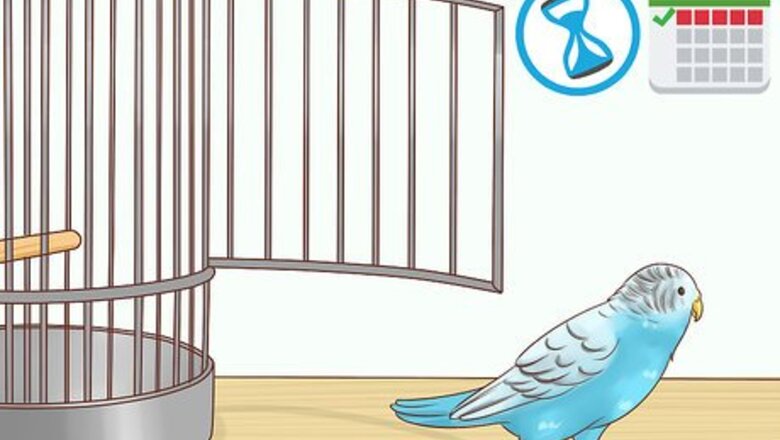
views
Though parakeets are great flyers, they won't survive in the wild on their own. That's why it's important to be careful when your parakeet is outside of its cage. Luckily, we'll tell you everything you need to know below!
Preparing Your Bird to Come out
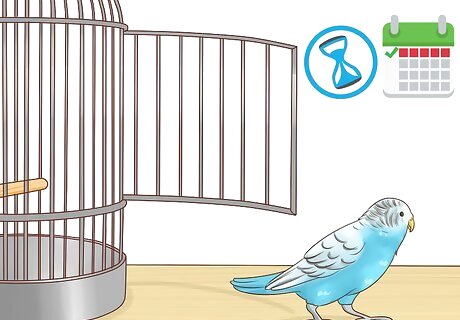
Let your parakeet adjust to a new home. Moving is stressful for parakeets, so avoid taking the bird out of their cage as much as possible in the first week or so that you bring it home. Taking it out too soon could cause them to get nervous and fly into things that could hurt them.
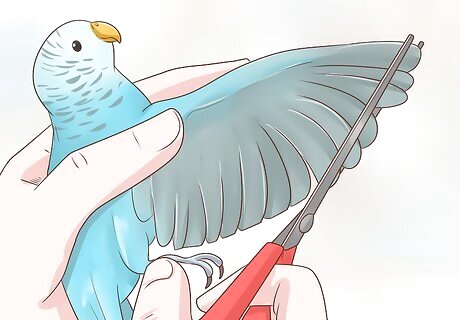
Get their wings clipped while you train them. You may ultimately opt to keep your parakeet fully flighted, but before your bird is hand-trained, it can be helpful to keep their wings clipped. This will keep them from flying away and hurting themselves while you teach them good out-of-cage behavior. Ask your seller if your parakeet’s flight feathers have already been clipped. If not, visit an avian vet. Even if you want to learn to clip the feathers at home, a vet should show you how it's done and walk you through the process the first time. Always take your bird to a professional avian vet for a wing clip, if possible. An unbalanced clipping can cause your bird to crash land when it attempts to fly. Another option is to train your bird to “come” on command, much like a dog might.
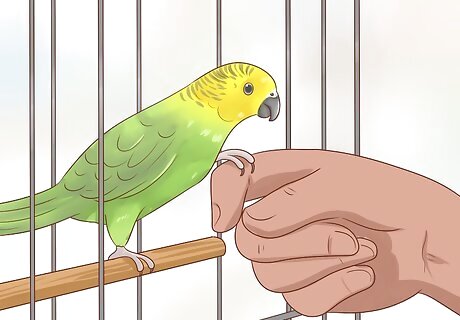
Hand train your parakeet. Hand training starts with you gently introducing your hand into the cage. When your parakeet is used to your hand, you can gently nudge them from their perch onto your finger. With practice and praise, you will eventually be able to train your parakeet to come to your finger using hand signals and vocal commands. It helps to keep treats nearby when you are hand training so that your parakeet learns to associate you with a positive experience. Hand training takes time, especially when you introduce verbal cues such as “up” and “return.” Be patient with your parakeet.
Readying Your Home
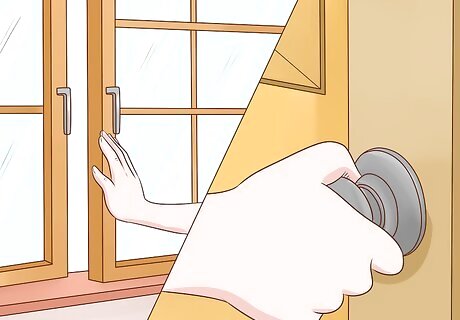
Close all windows and doors. Before you let your parakeet out to play, go through the house and make sure you have closed all windows, doors, and any other access points through which your bird could escape. Even birds with clipped wings can glide long enough to get away, so make sure all openings that lead outside are closed off before letting them out. Do not rely on window or door screens to contain your bird. These are often easily torn and could injure your pet. Fully close all doors and windows. You may want to cover mirrors and windows, as well, as parakeets can mistakenly fly into them. Close curtains or blinds and use a sheet to cover mirrors.
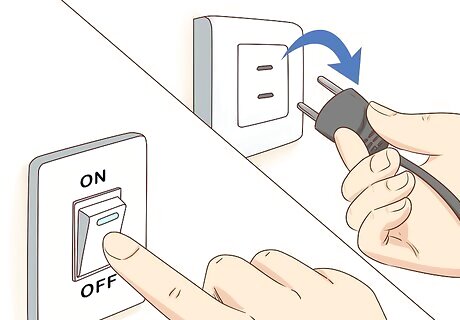
Turn off fans, hot lights, and appliances. Take a look around the area where you plan on letting your parakeet fly. Turn off any fans, lights that you know can run hot, appliances such as stove tops, ovens, and laundry machines, or anything else that could hurt your bird while it flies or once it lands. Open pots on hot stoves, open food, and open flames are all dangerous to your parakeet. Secure these before you let your bird out. Avoid using non-stick pans, which give off fumes toxic to birds.

Secure your other pets. Even well-meaning playful attention from your dog or cat could cause accidental injury for your parakeet, so it is important to secure any other pets you have before letting your parakeet out. You may decide to crate larger pets, or limit their access to your parakeet by keeping the bird play space in room with a closed door. Make sure small pets such as fish and hamsters are also secure from your parakeet, as a curious bird could hurt itself by trying to make friends with other small pets.

Hide chewing hazards such as cords and plants. Look over the area before letting your parakeet out to make sure there are no materials such as electrical cords or toxic plants that could harm your parakeet if they were to chew on them. Move plants to another area, and either unplug and remove cords, or else permanently cover them with a hard case. Common household plants that are toxic to parakeets include certain ferns, jasmine, many types of lilies, many types of grasses, oak, poinsettia, poppies, tulips, honeysuckle, cacti, clovers, and rhododendron.
Bringing out Your Bird
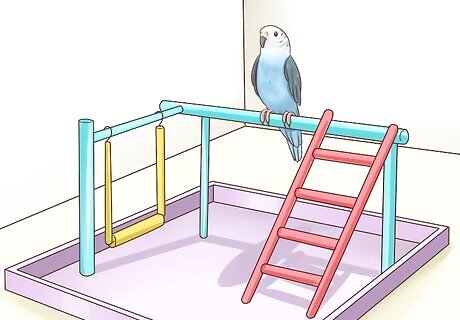
Set up a play area. Play stations with different sized perches, toys, slides, swings, and ladders are readily available from most pet stores, and help keep your bird active in a safe, area where you can watch them. Set up a play station in an area where your bird will not get droppings in their food or water, and where they have space to fly around to all the different parts and toys. Depending upon the size and shape of your cage, you may be able to set up the play area on top so that bird droppings can safely fall down to the paper liner below. Remember to provide food and water for your bird while it is out of the cage, as well.
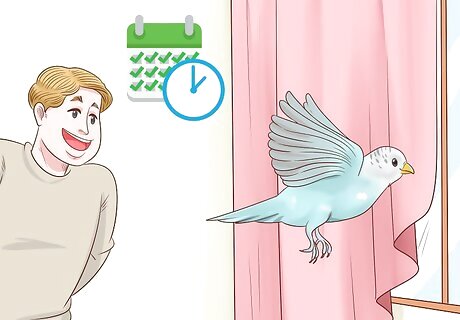
Schedule regular fly time that you can monitor. Your parakeet should be let out for fly time for at least an hour or so every day. They will need your full attention during that time. Schedule time every day for you to watch your parakeet while it plays. Avoid distractions like cooking, household chores, or staying on your computer or phone. Many owners find it helpful to avoid cleaning the cage during fly time. While it is a time saver to do them both at once, cage cleaning often involves going in and out of different areas and requires attention you may want to give your bird.
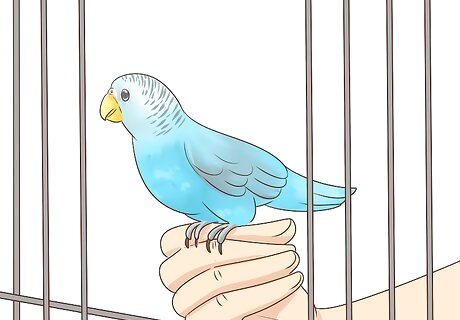
Help your bird back into the cage. Some parakeets will return to their cage between flights, but others may need your help finding their way back. If possible, get your parakeet to your finger and help them find their cage. If your parakeet refuses to return, move slow and dim the lights. Parakeets don’t like flying in dim lighting, so you can gently catch them and help them return. Do not chase after or aggressively catch your parakeet. This could spook them or cause them injury. Your best option is to try to get them on your finger, or to rest enough that you can gently grab them with two hands. Do not dim the lights so low that you cannot see your parakeet. Making the room too dark too quickly could cause the bird to run into walls or obstructions, which may cause them to hurt themselves.


















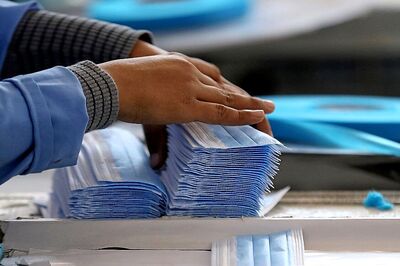
Comments
0 comment